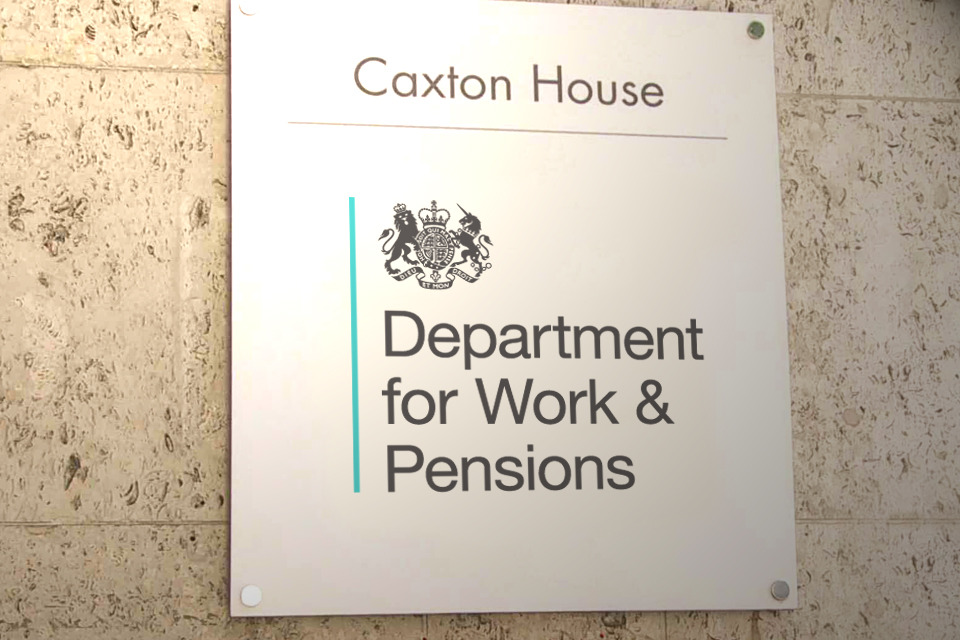PublicTechnology research reveals that, as authorities entered the last weeks of Windows 7 support, vast swathes of their computers were still running the decade-old OS
Credit: William Warby/CC BY 2.0
With less than one month to go until the end of support for Windows 7, companies across all spheres of industry are facing a race against time to upgrade their IT estate or, according to Microsoft’s own advice, they will become “more vulnerable to security risks and viruses”.
Security breaches are bad news for any organisation. For public sector entities – which hold and process highly sensitive personal data, and are charged with protecting society’s most vulnerable citizens – the impact can potentially permeate much more widely, and in more harmful ways.
Cyberattacks are now an inevitability for all businesses and government institutions.
Equally inevitable in the coming months is that, every time a public sector body is damaged by such an attack, attention will turn to the PCs used by its staff. Those that are still reliant on unsupported software will be judged harshly – certainly in the court of public opinion, and perhaps, too, by the Information Commissioner’s Office.
Aberdeenshire Council
Pre-upgrade: The authority reported 7,391 machines out of a total of 21,272 are running on Windows 7. This equates to 34.8% of all computers
Upgrade plan: “The remaining units are targeted to be upgraded to Windows 10 or disposed of by the end of the financial year 19/20.”
Information supplied on 24 July
Belfast City Council
Pre-upgrade: The authority reported 17 machines running on Windows 7 – and three running on a version older than that – out of a total of 2,275. This equates to 0.9% of computers running on Windows 7 or earlier.
Upgrade plan: “There is no deadline to move to Windows 10, but we aim to do it before support runs out.”
Information supplied on 25 July
Birmingham City Council
Pre-upgrade: The authority reported 11,174 machines, out of a total of 13,120, running on Windows 7 – and 14 running on an even older version. This equates to 85.3% of all computers running on Windows 7 or an older version.
Upgrade plan: The authority said it has set an upgrade deadline of “31 December 2019”.
Information supplied on 12 August
East Suffolk Council
Pre-upgrade: The authority reported 104 machines, out of a total of 460, running on Windows 7. This equates to 22.6% of all computers.
Upgrade plan: The authority said it has set an upgrade deadline of “December 2019”.
Information supplied on 15 August
Essex County Council
Pre-upgrade: The authority reported 2,934 machines, out of a total of 8,279, running on Windows 7. This equates to 35.4% of all computers.
Upgrade plan: The authority said that its deadline for upgrading was “mid-November 2019”.
Information supplied on 29 July
In the months leading up to the support shut-off, PublicTechnology has been conducting exclusive research into how big a challenge the public sector faces in eradicating Windows 7 from its IT infrastructure. Or, alternatively, how big a bill it will face in forking out for extended support: Microsoft is offering to keep Windows 7 PCs updated until an ultimate deadline of 2023, with payments for this service escalating over the next three years.
As we previously reported, most central government institutions were rather tight-lipped on the matter, with numerous departments repeatedly refusing to confirm or deny whether they even held information on what software is used by their staff.
Some were more forthcoming; the ICO itself revealed that it had set a December deadline to complete a project to upgrade the 90% of its 1,037 computers that still ran on Windows 7.
The Office for National Statistics told us that 5,059 of its 8,570 machines still operated the decade-old technology. The organisation said that it planned to upgrade to Windows 10 across the board by 31 March 2020.
While only 4.3% of its PC estate still runs on Windows 7, for an organisation as large as HM Revenue and Customs this still equates to a total of 1,781 machines. Moreover, the department said that it does not currently have a plan to upgrade these devices.
Fermanagh and Omagh District Council
Pre-upgrade: The authority reported that it has a total of 680 machines, of which approximately half still run on Windows 7.
Upgrade plan: The authority said that it would be replacing about 120 devices before the end of 2019, reducing Windows 7 to about 38% of its estate. A further 100 machines will be replaced next year. This would leave about 120 devices still on Windows 7, and the council said it has “no immediate plans to upgrade remaining devices to Windows 10”.
Information supplied on 9 August
Glasgow City Council
Pre-upgrade: The authority reported 6,072 machines, out of a total of 8,865, running on Windows 7. This equates to 68.5% of all computers.
Upgrade plan: The authority said that it has set a deadline of “August 2020” for upgrading.
Information supplied on 19 August
Greater London Authority
Pre-upgrade: The authority reported 1,100 machines, out of a total of 1,179, running on Windows 7. This equates to 93.3% of the total.
Upgrade plan: When asked if it had set a deadline for upgrading, the authority said, simply, “yes”. It chose not to specify when this date might be.
Information supplied on 7 August
London Borough of Havering
Pre-upgrade: The authority reported 2,399 machines, out of a total of 3,272, running on Windows 7. This equates to 73.3% of the total.
Upgrade plan: When asked if it had set a deadline for upgrading, the authority said, simply, “yes”. It chose not to specify when this date might be.
Information supplied on 20 August
Kent County Council
Pre-upgrade: The authority reported 355 machines, out of a total of 9,891, running on Windows 7. This equates to 3.6% of the total.
Upgrade plan: “Residual Windows7 devices are associated with legacy systems and, as such, any deadline is subject [to a] replacement project, and associated funding.”
Information supplied on 20 August
Lancashire County Council
Pre-upgrade: The authority reported 2,353 machines, out of a total of 8,715, running on Windows 7. This equates to 27% of the total.
Upgrade plan: A “provisional deadline” of 14 January – the end of support date – has been set by BT Lancashire Services, a joint venture between the telco and the council.
Information supplied on 20 August
“However, we are actively monitoring the additional exposure caused by the end of support on 14 January 2020,” it added.
When we submitted Freedom of Information requests to local authorities, which we did in late summer, most were responsive and open.
The information they supplied revealed the magnitude of the task faced by councils in getting their PC estate ready for Windows 7 end of life.
The 16 authorities profiled in this piece – which includes the Scottish and Welsh governments, alongside a representative spread of city, district, borough and county councils from around the UK – collectively possess a total of 116,158 desktops and laptops.
At the time of their response, 42,989 of these still operated on Windows 7 – equating to 37% of the overall total.
And, if the Welsh and Scottish governments are stripped out, this figure rises to 42%.
Leeds City Council
Pre-upgrade: The authority reported about 50% of its total estate of 13,257 machines running on Windows 7. “We are currently undergoing a Windows 7 to Windows 10 major project upgrade and are halfway through the exercise”
Upgrade plan: The authority intends to complete its upgrade programme by “31 March 2020”.
Information supplied on 1 August
Pembrokeshire County Council
Pre-upgrade: The authority reported about 350 machines, out of a total of 2,100, running on Windows 7. This equates to 16.7% of the total.
Upgrade plan: “We currently have an in-house rolling upgrade [and] device-replacement programme. All Windows 7 machines will be upgraded [or] replaced prior to 14 January 2020… the end-of-support deadline.”
Information supplied on 1 August
City of Westminster
Pre-upgrade: The authority reported about 1,400 machines, out of a total of 6,000, running on Windows 7. This equates to 23.3% of the total – although the authority said that its overall figure “includes retired Windows 7, and production Windows 7 and 10 devices”.
Upgrade plan: At the time of its response, the authority said that it was “currently working on a project that is targeted to complete in December 2019”.
Information supplied on 15 August
Scottish Government
Pre-upgrade: The Scottish Government reported 29 machines, out of a total of 8,393, running on Windows 7. This equates to 0.3% of the total number of computers.
Upgrade plan: “The Scottish Government completed a Windows 10 Upgrade project in November 2018. Any devices that are now identified with an older operating system will be upgraded or removed from the network.”
Information supplied on 12 August
Welsh Government
Pre-upgrade: The Welsh Government reported that it runs about 7,200 laptops and desktops – none of which run on Windows 7, it said. But it did report about 1,200 “HP thin-client devices that utilise the Windows 7 (Embedded Edition) operating system”. If added to the laptop and desktop estate, those thin clients represent 14.3% of the Welsh Government’s machines running on Windows 7.
Upgrade plan: The thin clients “will be decommissioned and replaced by Windows 10 laptops by November 2019”. The government added that “the Welsh Government are currently in the final phase of migrating all users to laptop [or] desktop devices running the Windows 10 operating system. Scheduled to complete by November 2019, these devices [will] replace all existing Windows 7 devices. As of August 2019 the project is circa 80% complete.”
Information supplied on 8 August
This is way above the 17.4% market share that Windows 7 holds across all PCs in the UK, according to Statcounter data. This figure has gradually declined as the end-of-life date has drawn near but, even in July – which was the earliest some of our councils responded – the figure was only 21.2%.
This means that the number of local government PCs running on Windows 7 is tracking at about double the national average.
Many of the authorities that responded to our FOI requests said that they hoped to finish migrating to Windows 10 by the end of December, or in the first two weeks of next year. But some are set to go some way into 2020 with a fleet of out-of-support machines. Others have not set any deadline at all upgrading.
With an average of four in ten of their workforce requiring new technology, whenever council chiefs choose to undertake their upgrade project, it will certainly keep their IT teams busy.
As scrutiny on the continued use of Windows 7 increases and intensifies next year, they may remain so for some time to come.



